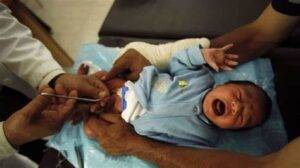Infant circumcision has been practiced for millennia and is still under discussion and criticism today. Decisions heavily rely on several elements, including cultural, religious, and physiological considerations.
While some contend that parents should make this personal choice, others assert that infant circumcision is a medical necessity. Nevertheless, we shall examine the arguments against newborn circumcision while also looking at its personal and medical implications.
Understanding Infant Circumcision

The foreskin that covers the tip of the penis is taken off during a surgical procedure known as infant circumcision. It’s a long-standing custom with strong roots in medical traditions, religion, and culture.
The treatment is usually done in the first few days following birth, though it can be done later in infancy or youth. In several cultures, it’s seen as a religious requirement or rite of passage.
Others find it advantageous health-wise since it lowers the risk of penile cancer, STDs, STIs, and conditions like urogenital infections. The degree of these advantages and the requirement for routine neonatal circumcision, however, polarize the medical community.
The circumcision procedure involves several techniques, but the most common one is the Plastibell method. This technique involves placing a plastic ring or bell over the glans of the penis and tying a suture around the foreskin.
Over time, the foreskin dries up and falls off, leaving a healed circumcision site. Other techniques include the Gomco clamp method and the Mogen clamp method, which use different clamps to remove the foreskin.
Despite the prevalence of infant circumcision, Omega Pediatrics has made it known that there has been a growing debate surrounding its ethics and necessity.
Critics argue that it violates the rights of infants to bodily autonomy and may cause unnecessary pain and complications. They advocate for leaving the decision about infant circumcision to individuals when they are old enough to provide informed consent.
Personal Decision: Cultural and Religious Factors
Infant circumcision is an evolving issue that depends on individual choices. Numerous factors, such as social, cultural, religious, and personal preferences, significantly affect one’s decision.
Cultural tradition is one of the primary justifications for infant circumcision. Circumcision is seen as a significant cultural practice and rite of passage in various societies. It’s considered a means to safeguard cultural identity and uphold a sense of community.
For instance, infant circumcision has a long history in several African societies. It’s frequently carried out as part of complex rituals and celebrations.
Religion can greatly influence the decision to circumcise infants. Consider the important Jewish ritual of circumcision, which is performed on infant males as a representation of the bond between God and the Jewish people.
Following the example of the Prophet Muhammad, Islam views the circumcision of male infants as a religious requirement. To honor their religion, many parents feel a duty to have their infants circumcised.
Personal preferences and health issues are also important when determining whether to circumcise an infant. Due to supposed health advantages such as a lower incidence of penile cancer, UTIs, and STDs, several parents decide on their children’s circumcision.
The medical community has differing views on these advantages, so a choice should only be made after carefully weighing the facts.
Medical Necessity: Health Considerations

Proponents argue that it’s a medical necessity and cite various health considerations in its favor. However, opponents assert that it’s an unnecessary procedure with potential risks and ethical concerns.
Reduced Risk of UTI
One of the main health considerations that proponents emphasize is the reduced risk of urinary tract infections (UTIs). According to studies, circumcised infants had lower UTI rates than their uncircumcised peers.
Since UTIs can have disastrous repercussions, such as kidney infections, if left untreated, proponents assert that circumcision can provide a prophylactic advantage.
Decreased Risk of STIs
The decreased risk of STIs, particularly HIV, is another aspect of health that is highlighted. STIs, including syphilis and herpes, are less common in men who have had their navels removed.
According to supporters, the foreskin is removed to reduce the danger of infections and the spread of these diseases.
Reduced Risk of Penile Issues
Advocates claim that circumcision can reduce the risk of penile issues, such as phimosis and balanitis, as people age.
Phimosis causes the foreskin to tighten and become immobile, causing discomfort and harmful effects. Balanitis is a glans penis infection that could also be prevented by circumcision.
Opponents, however, dispute these claims, arguing that the health benefits are not greater than the risks and ethical quandaries they present. They reason that other methods, like basic hygiene habits and safe sex, can effectively prevent UTIs and STIs.
Opponents further contend that circumcision is a permanent change to the body done without the person’s consent, which raises ethical questions about bodily autonomy.
Opponents also point out circumcision’s possible hazards and side effects, such as bleeding, infection, and surgical errors. They argue that although these risks are relatively low, they are still present and can have serious consequences for the infant.
Informed Consent and Ethical Considerations

The ethical concept of informed consent states that before choosing to have a medical procedure, a person must be fully informed of the benefits, risks, and available options. In newborn circumcision, it’s the parents or guardians who choose on the baby’s behalf.
-
- The child’s bodily autonomy and physical integrity are violated.
Critics claim that newborn circumcision violates a child’s autonomy and bodily integrity. Infants are subjected to a process without their knowledge that permanently changes their bodies without their consent.
When infants can comprehend the ramifications, they claim that they should be given the freedom to make decisions regarding their bodies.
-
- The surgical procedure exposes newborns to unnecessary risks.
Another ethical concern is the potential for unnecessary harm. While circumcision is generally considered safe, it is not without risks, including bleeding, infection, and complications from anesthesia.
Critics argue that performing a non-essential surgical procedure on an infant who cannot benefit from its potential advantages exposes them to unnecessary risks.
To address these ethical concerns, some argue for delaying circumcision until the child can provide informed consent. This approach allows individuals to make decisions about their bodies when they are capable of understanding the implications and potential risks.
Delaying circumcision respects the child’s autonomy and bodily integrity while still allowing for cultural or religious practices to be observed if desired.
A Few Alternatives for Infant Circumcision
Delaying Circumcision in Later Years
One alternative to infant circumcision is the practice of “wait and see.” Some medical professionals suggest deferring the option until the child can make an informed choice rather than routinely circumcising newborns.
Delaying the decision respects the person’s autonomy by letting them choose whether to have the treatment later in life. Critics claim that delaying circumcision could raise the hazards involved and complicate the process as an adult.
However, supporters contend that one should respect one’s preferences and physical integrity.
Using Non-Surgical Methods
Another alternative gaining attention is non-surgical methods such as PrePex and the ShangRing. These devices employ different techniques to achieve circumcision without surgical intervention. They don’t need anesthesia, are relatively safe, and are rapid.
Non-surgical methods may reduce the risks associated with traditional circumcision, including infection, blood loss, and discomfort. However, the fact that these methods aren’t widely utilized or accepted in all locations limits the practicality of these devices.
-
- Educating individuals on good hygiene
Education about good hygiene habits and the advantages of circumcision has received more attention in recent years. Some argue that by promoting good hygiene habits, such as regular cleaning, the need for circumcision is reduced.
This approach emphasizes the importance of education and preventive measures as alternatives to surgery.
Infant Circumcision: What the Future Holds
Less invasive procedure as an alternative to surgery.
The future perspective of infant circumcision may see advancements in medical technology and techniques. Researchers are exploring less invasive procedures, such as laser circumcision, which could potentially reduce complications and recovery time.
Regenerative medicine and tissue engineering
Regenerative medicine and tissue engineering hold promise for developing alternative treatments that can replicate the benefits of circumcision without the need for surgery.
Respectful dialogues with diverse societies.
It’s vital to take cultural and religious backgrounds into account when exploring alternatives to newborn circumcision. Respectful dialogue and understanding are crucial when exploring alternative perspectives and potential changes.
The discussion around infant circumcision alternatives and future perspectives continues to evolve. The wait-and-see strategy, non-surgical treatments, hygiene education, technological developments, and regenerative medicine need more research.
In the end, the choice to undergo circumcision should be based on a thorough knowledge of the potential hazards, advantages, cultural norms, and personal autonomy.
Make an Informed Choice on Your Baby’s Circumcision
Infant circumcision remains a highly debated topic, with arguments revolving around personal choice, cultural and religious beliefs, and medical necessity. Others doubt its medicinal benefits and ethical ramifications.
Some individuals see circumcision as a personal choice that respects cultural and religious norms. However, the choice should be made after examining the medical data, cultural norms, and ethical issues while respecting the person’s rights and autonomy.
For Omega Pediatrics, being aware of the diverse viewpoints about infant circumcision, parents and medical professionals may have respectful discussions and make choices that are best for the overall well-being of the child.



